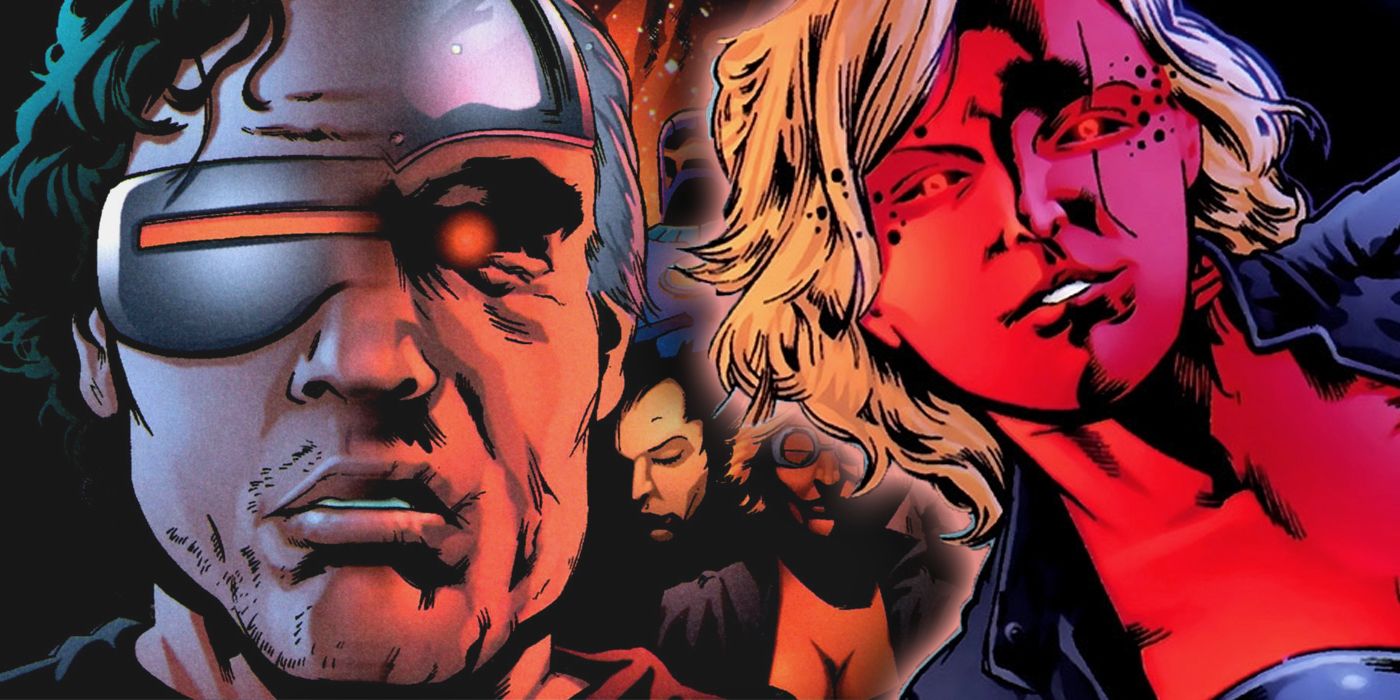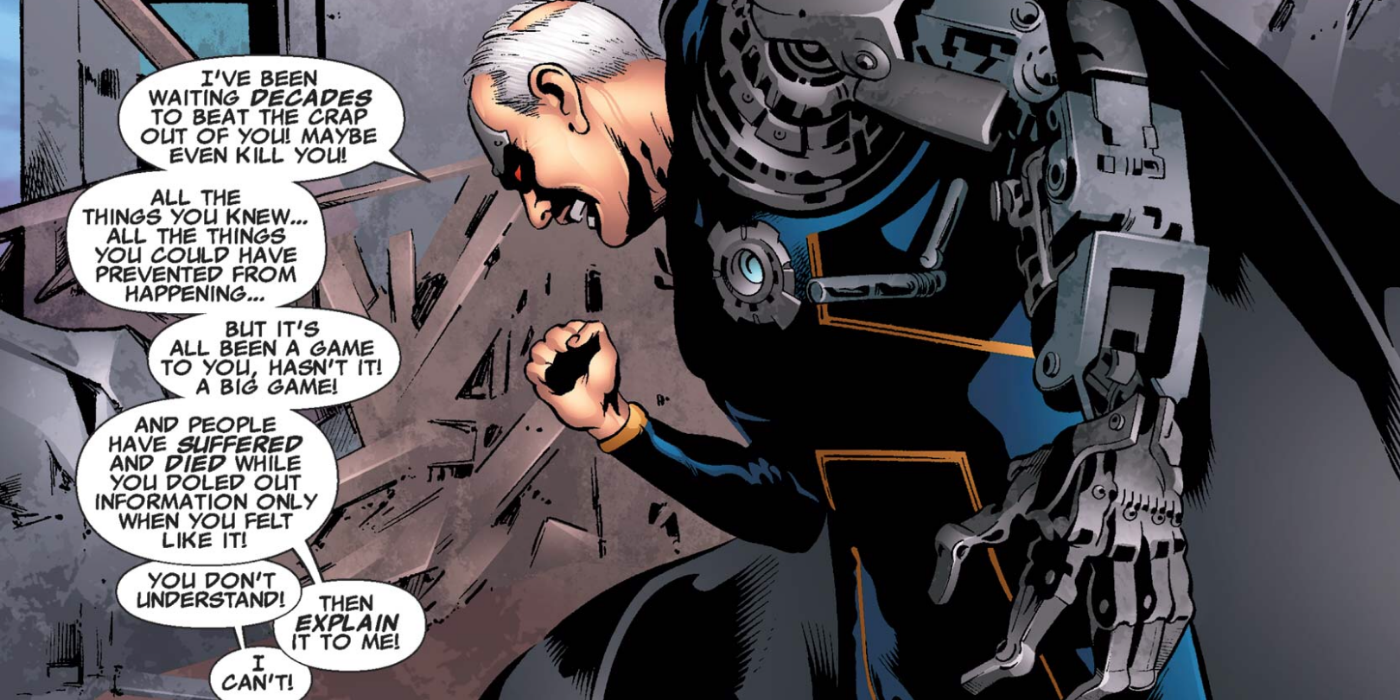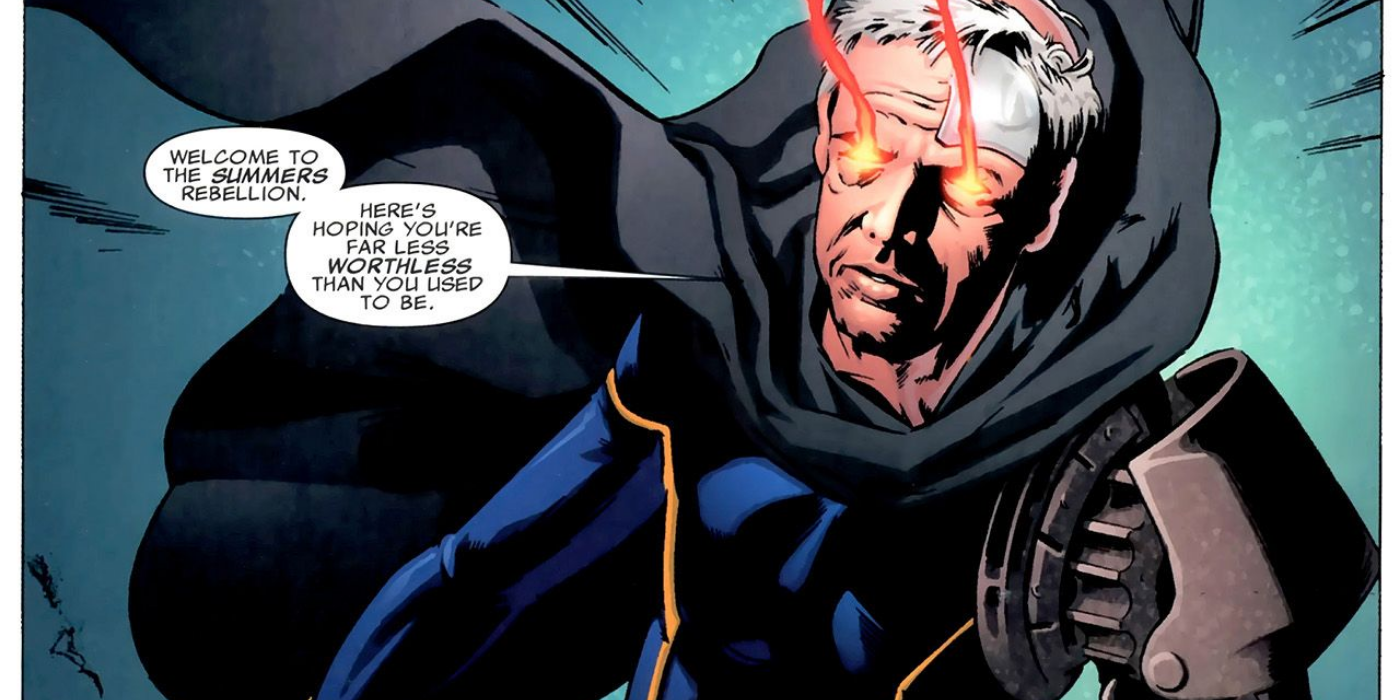The X-Men are no strangers to dystopian futures, but their most important trip through time may have been Layla Miller and Jamie Madrox’s visit to Earth-1191 when they sparked the Summers Rebellion. It’s a similar future to the one Kitty Pryde visited in Chris Claremont’s and John Byrne’s classic “Days of Future Past” storyline in Uncanny X-Men #141-142, but this rebellion saved the X-Men’s future.
In the Earth-1191, the Sentinels have taken over the United States. Mutants are in death camps, fenced in behind barbed wire walls with Sentinels lurking in the distance. The penalty for any escape attempt is death. Mutants are forced to have an “M” tattooed over their right eye, so even if they do make it out, they’re easily recognizable. A cyborg Cyclops, hiding in Atlantic City with his daughter Ruby Summers, had lost all hope until Layla Miller arrived in 2008's X-Factor: Layla Miller Special #1, by Peter David and Valentine de Landro.
At first, he’s furious with Miller for not telling him that this was what the future had in store for mutants. Miller—whose catchphrase at the time was, “I’m Layla Miller, I know stuff”—did know, but couldn’t tell anyone. With her newly shaved head and newly tattooed face, she bursts into tears and Cyclops softens.
Miller returns to her timeline as a grown woman, which shocks her X-Factor Investigations teammates because she left as an adolescent girl. It’s reminiscent of the moment in Uncanny X-Men #160 by Chris Claremont and Brent Anderson when Illyana Rasputin falls into Limbo only to be pulled out seconds later, yet has aged years. This adult Miller returns to the future with X-Factor’s leader, Madrox the Multiple Man.
The pair are joined by a motley group in their war against mutant captivity. Ruby Summers, daughter of Cyclops and Emma Frost, has skin as red as her name and shoots a black optic blast that requires 93 seconds to recharge. The other two heavy hitters in the rebellion are a senile Doctor Doom, who despite his deteriorating mind is still an expert in time travel, and a surprisingly heroic Trevor Fitzroy. The core group is joined by the less familiar Daemon, Hecat’e, Sureshot, Salvé, and Hancock, among others.
The rebellion was going well, as the team took out all of the sentinels sent after them, when Doom betrayed them. He took control of Cortex—one of Madrox’s dupe that had been transformed and controlled by Damian Tryp and Anthony Falcone—and ordered him to kill the mutants. Cortex manages to kill Fitzroy and Salvé before Miller reveals that her power isn’t knowing stuff. She can bring people back from the dead. She reluctantly resurrects Fitzroy and he helps them to defeat Cortex and the sentinels.
While Fitzroy’s actions helped the rebellion succeed, Miller’s powers may be what led him to becoming a villain later on. It’s demonstrated throughout Peter David’s and Pablo Raimondi’s X-Factor that the people Miller resurrects come back without a soul or morality.
The success of the rebellion also leads to the foundation of the Xavier Security Enforcers (X.S.E.), a mutant police force that keeps Professor X’s dream alive. The organization attempted to repurpose the M tattoo mutant’s were forced to get over their eye as a badge of honor. They’re most famous in the world of X-Men for training Fitzroy’s long-time rival, the hero Bishop.
Without the Summers Rebellion, Bishop would be a completely different person, possibly never joining the X-Men. There would be no X.S.E. Mutants would be trapped in concentration camps in the future. Without the Summers Rebellion, the X-Men of this corner of the Marvel Multiverse would quite simply have no future.



